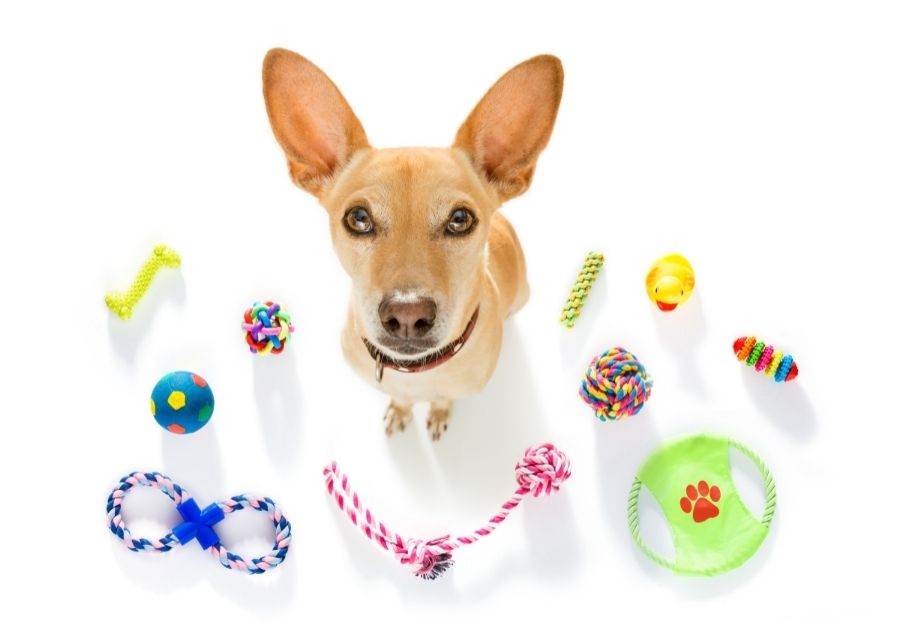Tibetan Mastiff Vs Great Dane, quite a comparison!
If you can’t seem to solve this dilemma on which one to adopt, then worry not, as I got you covered through this article.
I will walk you through these 2 phenomenal dog breed histories, physical appearance, lifespan, health conditions, nutritional requirements, and grooming requirements.
I will also provide you with a complete summary of the main differences between these 2 dog breeds, which I am optimistic will help you make an informed decision on which one to adopt.
| Attributes | Tibetan Mastiff | Great Dane |
| Good For First Time Owners | No | No |
| Good Guard Dog | Yes | Yes |
| Apartment Friendly | With Enough Exercise | Yes |
| Good Family Dog | Possible With Lots Of Training | Yes |
| Shedding | Low To Moderate | Moderate To Heavy |
| Barking And Howling | Moderate To High | Moderate |
| Height | 24-30 inches (61-76 cm) | 28-32 inches (71-81 cm) |
| Average Life Expectancy | 10-12 Years | 7-10 Years |
[wpsm_toplist]
Tibetan Mastiff – Dog Breed Information
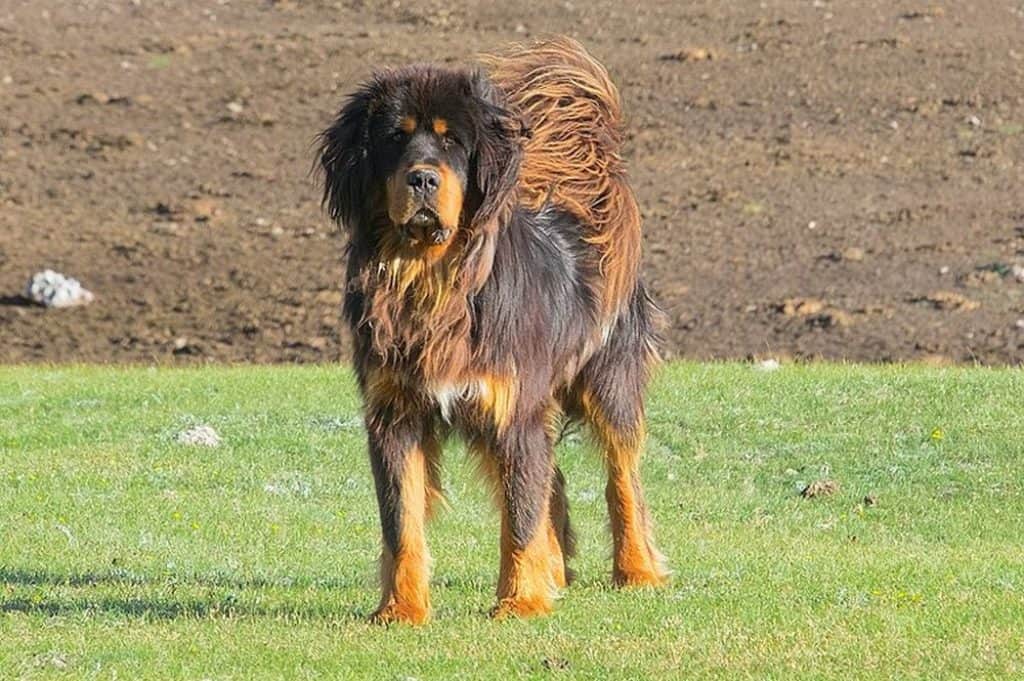
Also known as Do khyi (in Chinese), Bhote kukur(in Nepali), and Bhankhar (in Mongolian).
History And Physical Appearance
The Tibetan Mastiff origins can be traced back to the Tibet region.
This dog breed was bred by the nomadic Tibet people as a herding, guarding, and working dog.
The Tibetan Mastiff is a primitive dog breed, that is, it still retains its hardy features that made it survive the extreme temperatures of the Himalayas mountains.
It was Recognized as a working dog breed by American Kennel Club in 2006.
This large-sized dog breed can grow to a height of 24-30 inches and weigh around 34-68 kgs as an adult.
Its broad head, short muzzle, prominent jowls, V-shaped ears, and well-built body gives it its distinctive looks.
Its long water-resistant double coat can be black, black and tan, reddish and bluish-gray.
Lifespan And Health Conditions
The Tibetan Mastiffs have a life expectancy of 10-12 years.
These hounds are susceptible to autoimmune hypothyroidism, Osteochondrosis Dissecans, Elbow, and Hip dysplasia.
All these medical conditions tend to lower their life expectancy and quality as well.
Nutritional Requirements
A Tibetan Mastiff thrives well when fed with food rich in quality proteins. Just be sure to feed it an hour before or after exercising.
Please NOTE! Feeding your hound right after or before engaging in a physical activity predisposes it to get digestive complications that can sometimes be life-threatening.
Temperament
The Tibetan Mastiffs are revered for their boldness, loyalty, and protective temperaments.
These 3 qualities make them excellent guard dogs.
This dog breed is also instinctually aloof in that it’s a bit distant and not easily approachable.
However, adequate socialization at a young age can make this sturdy breed become socially friendly.
They can also be tenacious and strong-willed, especially when not sufficiently trained in obedience commands at a young age.
Grooming Needs
These athletic dog breed only require a one-time bath every 6-8 weeks since they are usually odorless despite their large size.
It’s vital that you brush their coats at least 3 times a week to prevent the matting of their hairs.
It’s essential that you clean your Tibetan teeth at least 3-4 times a week due to their high tendency to drool.
Also, consider wiping its mouth regularly to avoid a build-up of odor or creating an environment suitable for disease-causing microorganisms to thrive.
Great Dane – Dog Breed Information
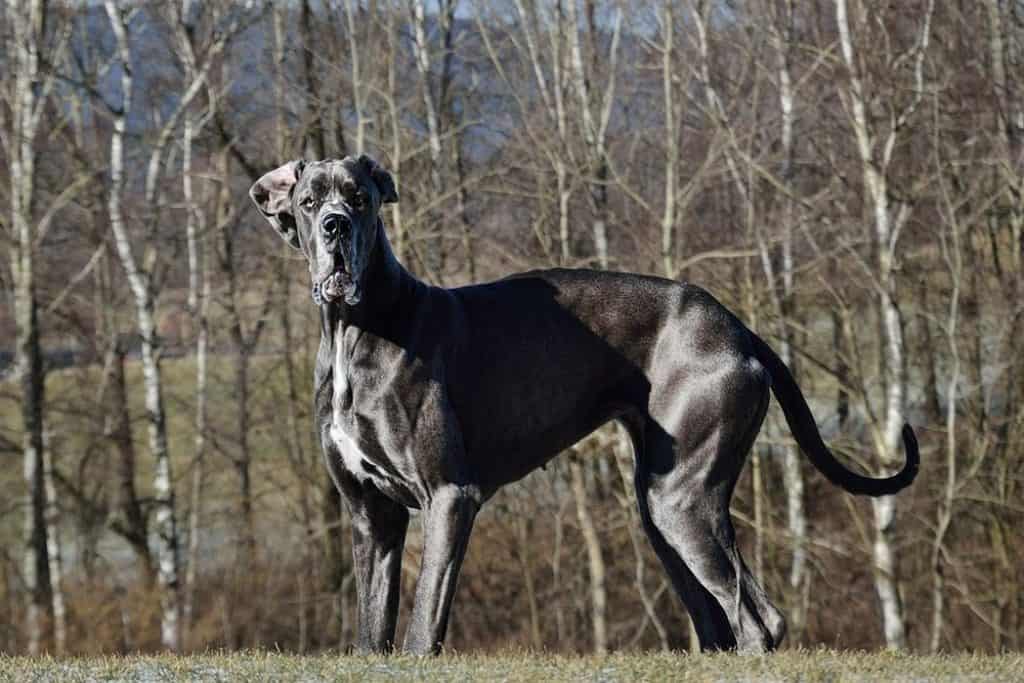
Previously known as English Dogge until 1878. Presently also known as Dane, Deutsche Dogge, Gentle Giant, and German Mastiff.
History And Physical Appearance
The Great Dane dog breed origins can be traced back to Germany, where the nobles of Germany bred them in their courts around the 17th century.
Initially, it was bred as a hunting dog; however, due to the revolution of weaponization, this dog breed’s purpose changed and became more of a luxury dog rather than a working dog breed.
It was recognized as a working dog breed by the American Kennel Club in 1887.
This dog breed can grow to a height of 28 -34 inches and weigh around 45-90 kgs as an adult.
The males are usually more prominent than the female. This muscular dog breed has a square physique.
Its long rectangular head, short and powerful muzzle, almond-shaped eyes that are blue when it’s a pup, and brown when it gets older, and floppy triangular ears give this dog its distinguishing features.
They have a smooth, short, single coat that may be Fawn, brindle, black, harlequin, grey merle, mantle, and blue.
The Harlequin coat color is characterized by pure white with black torn patches, which are typically distributed evenly on a Great Dane’s body.
Lifespan And Health Conditions
Great Danes have a lifespan of 7-10years.
However, Cancer, Hip dysplasia and Heart conditions such as dilated cardiomyopathy, Patent Ductus Arteriosus (PDA) and Tricuspids Valve Dysplasia, tend to lower this dog breed’s life expectancy and quality.
Nutritional Requirements
Great Danes require food rich in protein and quality but moderate fats. Feed it at least 2 times a day. Consider providing your Dane with white meat or sea meat.
Pro-tip; Avoid feeding your dog raw food. Cooked food makes it easier for your hound to digest, thus providing it with all the necessary nutrients.
Also, feeding your hound with raw food predisposes it to develop health issues associated with harmful disease microorganism that may be found in raw food.
Temperament
Great Danes are known for their devoted, friendly, confident, intelligent, and affectionate nature.
However, these dogs can be pretty strong-willed, especially when not adequately trained at a young age.
Grooming Needs
These dogs are not highly demanding when it comes to their grooming needs.
Bathing them once every 4-6 weeks is all they need to stay clean and smelling fresh.
Brush its coat at least once a week and brush its teeth with a dog-safe toothpaste 2 times a week.
Tibetan Mastiff Vs Great Dane – What Are Their Main Differences?
| Tibetan Mastiff | Great Dane |
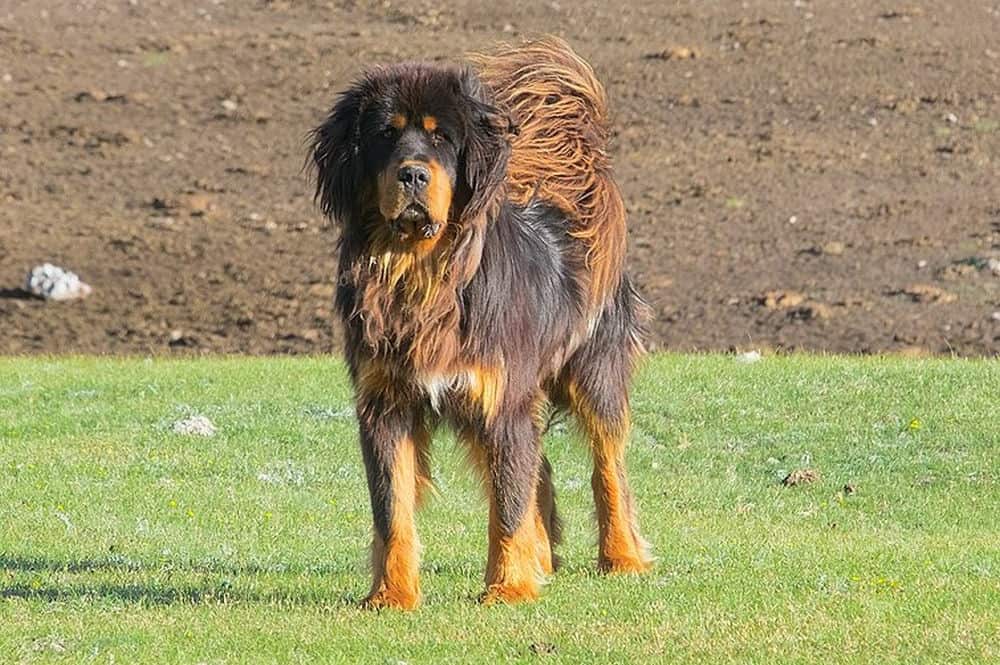 | 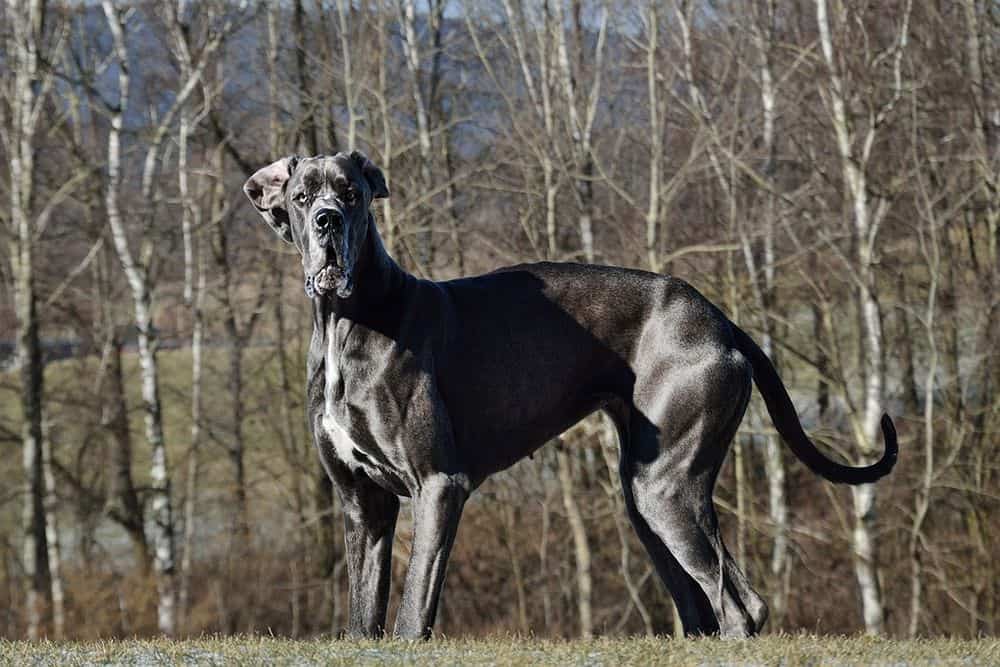 |
| Tibetan Mastiff by Alexandr frolov (CC BY-SA 4.0) |
Country/Place Of Origin
The Tibetan Mastiff originated from Tibet, whereas the Great Dane has its origins traced back to Germany.
Size
The Tibetan Mastiff is a large-sized dog breed which can grow to a height of 25-28 inches long and weigh around 34-68 kgs as an adult.
On the other hand, the Great Dane is a gigantic dog as it can grow to heights of 28 -34 inches and weigh around 45-90 kgs as an adult.
This makes the Great Danes be more enormous both in height and weight when compared to the Tibetan Mastiffs.
Lifespan
The Tibetan Mastiff has a lifespan of 10-12 years, whereas the Great Danes have a life expectancy of 7-10 years.
The Tibetan Mastiff generally tends to outlive the Great Dane dog breed.
Health Conditions
The Tibetan Mastiffs are more predisposed to both genetic and acquired health conditions when compared to the Great Dane.
If you opt to adopt the Tibetan Mastiff, make sure that you take it for a vet visit at least 2 times a year.
And if you choose to adopt the Great Dane as your lifetime companion, make sure that you take it for a vet visit at least once in every 12-18 months.
Litter Size
The Tibetan Mastiff can have a litter size of 5-10 puppies at once, whereas the Great Mastiff can have a litter size of 10-15 puppies at once.
Note! Excessive breeding isn’t healthy for a dog momma as it puts it at a risk of developing future health complications.
Pro-tip; So, ensure that you have your dog neutered or sprayed after it gives birth 3 times.
Drooling Potential
The Tibetan Mastiff drools way more than the Great Dane dog bred.
The Great Danes are more social and outgoing when compared to the Tibetan Mastiffs. The Great Danes are more receptive to strangers than the Tibetan Mastiff.
Also, the Danes are more kid-friendly, which is in contrast to the Tibetan Mastiff.
This makes the Tibetan Mastiff an ideal fit for a dog parent who doesn’t have a large household or kid(s) around.
Independent Nature
The Great Dane is a bit less independent when compared to the Tibetan Mastiff.
However, both of the 2 breeds are not ideal for an absentee owner as they are unable to tolerate being left alone for long hours.
Biting Potential
The Danes have a lower potential of biting a person or an animal.
In contrast, the Tibetan Mastiff has a very high potential to bite a person or an animal even with the slightest provocation.
Grooming Needs
The Danes require less grooming and less time to groom when compared to the Tibetan Mastiff dog breed.
Approximate Cost
Adopting the Great Dane from a reputable breeder will cost you around $800-$1200, whereas adopting the Tibetan Mastiff will cost you about $1500-$5000.
This means that Tibetan Mastiffs go at a higher price than the Great Danes.
Tibetan Mastiff Vs Great Dane – What Are Their Main Similarities?
Tibetan Mastiff Vs Great Dane both these 2 dog breeds make excellent guard dogs, watchdogs, and family dogs.
Both dogs are intelligent, easy to train, and also have an average prey drive.
Both dogs are also heavy droolers due to their short muzzles and large jowls (lower part of the cheek); however, the Tibetan Mastiffs drools way more than the Danes.
NOTE! These 2 breeds are not suitable for novice dog owners due to their potential to be stubborn and aggressive when not adequately trained at a younger age.
They are also not hypoallergenic, making them not to be a good fit for dog enthusiasts who are allergic to dog dander.
Always adopt your hound from a reputable breeder.

